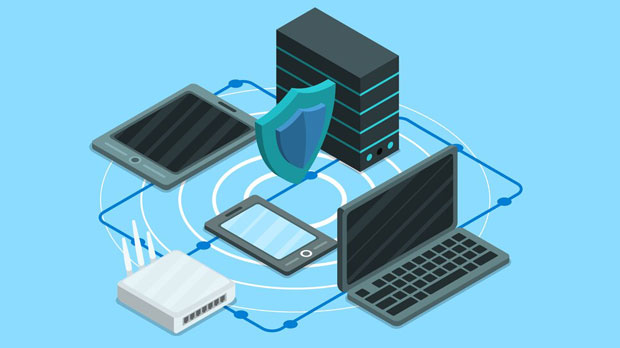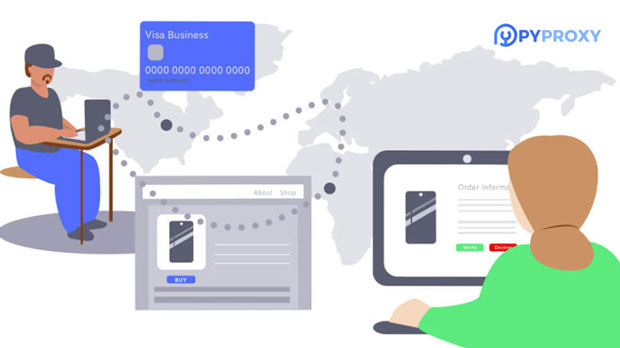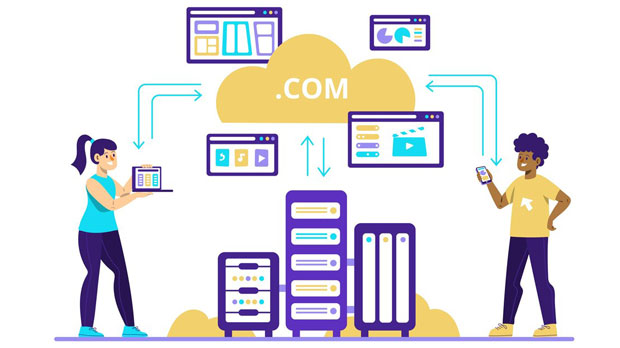In the rapidly evolving world of automation and proxy management, choosing the right type of proxy for long-term tasks can be crucial for ensuring performance, reliability, and cost-effectiveness. PYPROXY, a powerful Python library, is often praised for its proxy management features, including static proxies. But the question arises: is PyProxy's static proxy configuration suitable for long-term tasks? The answer depends on various factors such as the nature of the task, scalability, and the specific requirements of your operations. In this article, we will analyze the advantages and potential limitations of using static proxies in PyProxy for long-term tasks, providing a thorough understanding of when and why this setup can be beneficial. Understanding Static Proxies in PyProxyBefore delving into whether static proxies are suitable for long-term tasks, it's essential to first understand what static proxies are and how they function within PyProxy. A static proxy, in simple terms, refers to a fixed IP address used repeatedly for a particular task or session. In PyProxy, static proxies are typically set up for tasks that require consistent IP addresses for a period of time. These proxies do not rotate automatically, unlike dynamic proxies, which change frequently to avoid detection or bans.Static proxies are often used for tasks that require high consistency and reliability, such as web scraping, API access, or tasks that need to maintain a persistent connection. PyProxy provides a user-friendly interface for managing these proxies, allowing developers to control various parameters like the target server, IP address, and connection settings.Benefits of Static Proxies for Long-Term TasksWhen it comes to long-term tasks, static proxies offer several benefits that make them a compelling choice in specific scenarios. These benefits include:1. Consistent IP Address for StabilityOne of the key advantages of static proxies is the consistency they offer. In long-term tasks, having a fixed IP address ensures that the task can continue without interruptions due to IP changes. For example, if you're scraping data from a website that requires login credentials or personalized requests, a static IP helps maintain session persistence. Frequent IP changes might disrupt sessions, leading to errors or data inconsistencies.2. Simplicity and ReliabilityStatic proxies are relatively easy to set up and manage, making them suitable for long-term tasks where simplicity and reliability are essential. Developers do not need to worry about proxy rotation or managing a complex proxy pool, which is often the case with dynamic proxies. This simplicity can save time and effort, especially when the primary focus is on ensuring that the task runs smoothly for an extended period.3. Improved Performance in Certain Use CasesFor certain types of tasks, such as logging into secure websites or accessing APIs with rate limits, static proxies can help improve performance. Since the IP address remains constant, the server is less likely to flag the requests as suspicious or as part of automated behavior. In cases where consistent access is necessary over time, static proxies are an ideal choice.Potential Limitations of Static Proxies for Long-Term TasksWhile static proxies offer several benefits, there are some challenges and limitations to consider when using them for long-term tasks. These include:1. Risk of IP BlockingStatic proxies, especially when used for tasks such as web scraping, can be at risk of being blocked or blacklisted by the target website. Since the IP address remains constant, websites can quickly detect patterns of suspicious activity and block the IP address. This issue is less prevalent with dynamic proxies, which continuously rotate their IP addresses, making it more difficult for websites to detect automated behavior.To mitigate this risk, it's essential to use high-quality, reputable static proxies and to ensure that the tasks are well-configured to mimic human-like behavior. However, even with these precautions, there's still a higher risk of IP blocks compared to dynamic proxies.2. Scalability ChallengesStatic proxies are typically limited by the number of available IP addresses. If your long-term task involves scaling up or managing a large number of tasks simultaneously, you might encounter limitations with the number of static IPs you can use. This can become a bottleneck, especially if your operation grows and requires more proxies to handle the load.In contrast, dynamic proxies, with their rotating IP system, are better suited for scaling operations because they provide a much larger pool of IP addresses to choose from. If scalability is a priority for your long-term task, you may need to explore other proxy options or consider using a hybrid approach with both static and dynamic proxies.3. Cost ConsiderationsAnother factor to consider is the cost of static proxies. Since static IPs are typically more expensive than dynamic proxies, using them for long-term tasks can result in higher costs. This is particularly true if your task requires a large number of static proxies to handle multiple sessions simultaneously.Although static proxies may provide a higher level of stability and reliability, the associated costs may outweigh the benefits for certain use cases. In cases where budget constraints are a concern, dynamic proxies might offer a more cost-effective solution.4. Limited Rotation and RedundancyStatic proxies do not offer the automatic IP rotation or redundancy features that dynamic proxies provide. For long-term tasks that involve high volumes of requests, the lack of rotation can lead to IP throttling or blocking. Even if you are using static proxies that rotate manually or through a proxy pool system, this requires additional configuration and management, which may not be ideal for all users.When Should You Use Static Proxies for Long-Term Tasks?While static proxies have their drawbacks, they are still highly effective for certain long-term tasks. Here's when you should consider using them:1. When Consistency and Stability Are CriticalIf your task requires a stable connection with minimal risk of interruptions, static proxies can provide the consistency you need. For example, if you're running a web scraping operation that involves login sessions, maintaining a consistent IP address helps ensure the sessions remain active and uninterrupted over time.2. When Working with Secure Websites or APIsFor tasks that require secure access to websites or APIs, such as logging in or making personalized requests, static proxies can improve the chances of success. The static IP is less likely to trigger security mechanisms that block or limit access, making static proxies a suitable choice for long-term tasks involving secure environments.3. For Low-Volume Tasks or Limited AutomationIf your long-term task is low-volume or involves limited automation, the risk of IP blocks and scalability issues may be minimal. In this case, the simplicity and cost-effectiveness of static proxies might outweigh the potential risks.Conclusion: Is PyProxy Static Proxy Right for Your Long-Term Task?In conclusion, PyProxy's static proxy setup can be a solid choice for long-term tasks that prioritize consistency, stability, and simplicity. However, it is not without its limitations, such as the risk of IP blocking, scalability concerns, and higher costs. When evaluating whether static proxies are the right choice for your long-term task, consider the specific requirements of your task, the scale of your operations, and the potential for IP blocks or bans. For tasks that require minimal risk, consistent access, and a manageable scale, PyProxy's static proxies can be a valuable tool.
Oct 21, 2025



































































